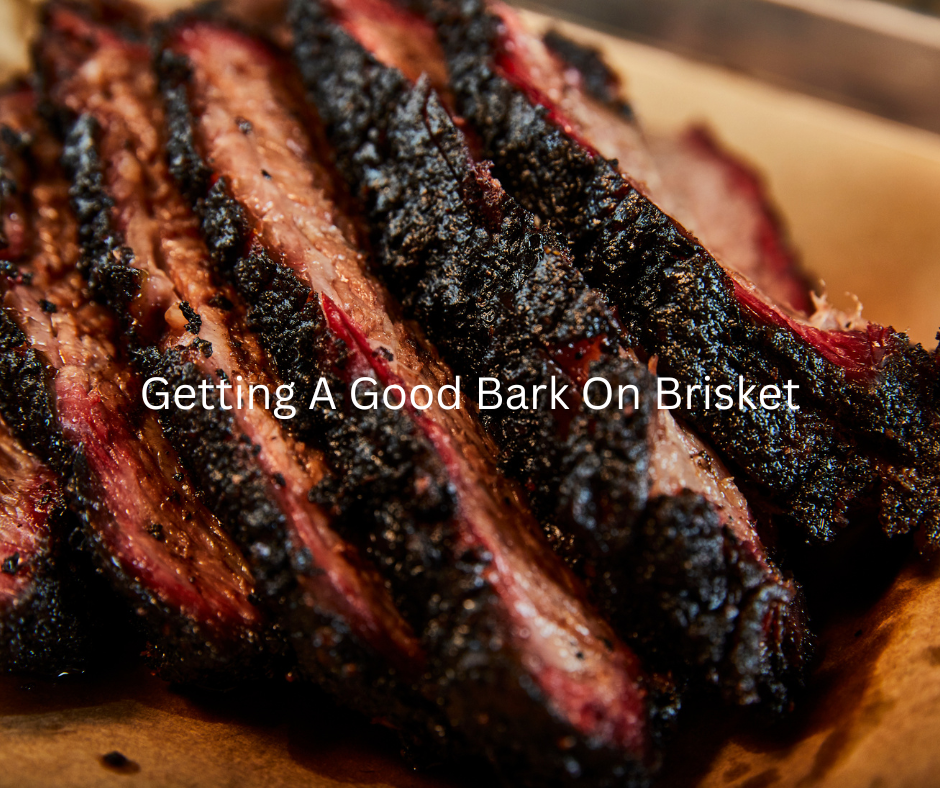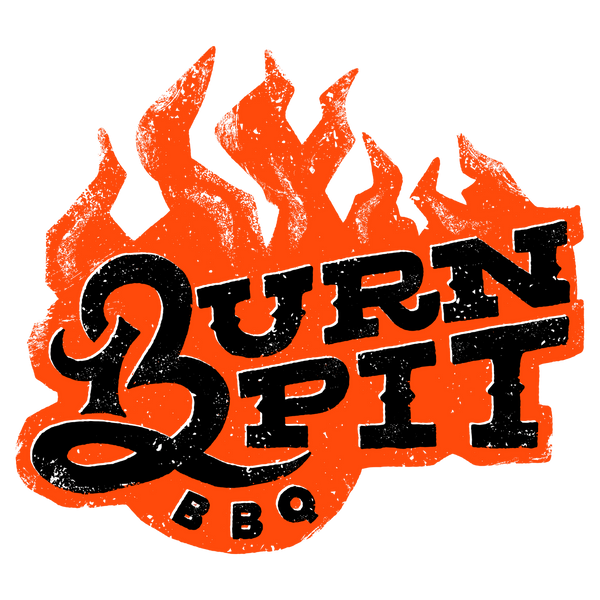
Getting a Beautiful Bark On Your Brisket
Share
The formation of the bark on a brisket involves a combination of chemical reactions, heat, and time. The bark is essentially a flavorful and crusty exterior layer that develops during the smoking process. Here's a breakdown of the science behind the formation of the bark:
-
Maillard Reaction: The Maillard reaction is a complex chemical process that occurs between amino acids (proteins) and reducing sugars when exposed to heat. This reaction is responsible for the browning and development of new flavors in the meat. As the brisket's surface heats up, the Maillard reaction kicks in, creating the characteristic color and taste of the bark.
-
Caramelization: Caramelization involves the breakdown of sugars under heat, resulting in the development of sweet and complex flavors. The sugars present in the rub applied to the brisket contribute to caramelization during the smoking process, adding depth to the overall flavor profile of the bark.
-
Smoke Deposition: The type of wood used in the smoker contributes to the flavor and appearance of the bark. As wood burns, it releases compounds, such as lignin and other organic compounds, which adhere to the surface of the meat. This smoke deposition adds a smoky flavor and contributes to the dark color of the bark.
-
Evaporation and Crust Formation: As the brisket cooks, moisture on the surface evaporates. This process, combined with the dry rub and the presence of fat on the meat, leads to the formation of a crust. The crust helps seal in moisture while allowing the exterior to develop a pleasing texture.
-
Rendering of Fat: The fat present in the brisket plays a crucial role in bark formation. As the brisket cooks, the fat slowly renders and combines with the other elements to create a rich and flavorful crust. This fat also helps in conducting heat evenly across the surface of the meat.
-
Low and Slow Cooking: The low and slow cooking method promotes the gradual breakdown of collagen in the meat into gelatin. This contributes to a tender texture and, along with the other processes, adds to the overall mouthfeel of the brisket.
In summary, the bark on a brisket is the result of a combination of chemical reactions, including the Maillard reaction and caramelization, along with the influence of smoke, moisture, and fat. The art of achieving the perfect bark lies in balancing these factors during the smoking process to create a flavorful and visually appealing crust on the exterior of the meat.
To get a nice bark on a brisket, you'll need to follow a few key steps during the smoking process. The bark refers to the flavorful and crusty exterior of the brisket. Here's a general guide:
-
Select a Good Brisket: Start with a quality brisket. Look for one with a good amount of fat, known as marbling, as this contributes to moisture and flavor.
-
Trim Excess Fat: Trim excess fat from the brisket, leaving about 1/4 inch. This helps the rub adhere to the meat and promotes better bark formation.
-
Apply a Flavorful Rub: Generously apply a dry rub to all sides of the brisket. Common ingredients in the rub include salt, pepper, paprika, garlic powder, onion powder, and other spices. Allow the rub to sit on the meat for at least an hour (overnight is even better) to enhance flavor absorption.
-
Let it Rest: Allow the brisket to come to room temperature before placing it on the smoker. This helps the meat cook more evenly.
-
Maintain a Consistent Temperature: Control the temperature of your smoker. Aim for a low and slow cooking method, usually around 225-250°F (107-121°C). This allows the meat to develop a nice bark over an extended period.
-
Use Wood for Flavor: Choose a type of wood that complements the flavor of beef, such as oak, hickory, or mesquite. The smoke from the wood contributes to the overall taste and appearance of the bark.
-
Spritz or Mop Occasionally: Spritz the brisket with a liquid (such as apple juice, water, or a vinegar-based solution) or mop it with a basting brush during the smoking process. This helps keep the surface moist and enhances the bark.
-
Monitor Internal Temperature: Use a meat thermometer to monitor the internal temperature of the brisket. When it reaches the desired temperature (usually around 195-205°F or 90-96°C), it's ready to be taken off the smoker.
-
Rest Before Slicing: Allow the brisket to rest for at least 30 minutes before slicing. This allows the juices to redistribute, resulting in a juicier end product.
By following these steps, you should be able to achieve a flavorful and crispy bark on your brisket. Keep in mind that every smoker is different, so you may need to adjust cooking times and temperatures based on your specific setup.
Here's a basic recipe to guide you through the process:
Ingredients:
- 1 whole beef brisket (10-12 pounds)
- Charcoal briquettes
- Wood chunks or chips (hickory, oak, or mesquite)
- Salt and black pepper for the rub
- Optional: Garlic powder, onion powder, paprika, and cayenne for additional flavor
- Spritzing liquid (apple juice or water)
Instructions:
Preparing the Brisket:
-
Trimming: Trim excess fat from the brisket, leaving about 1/4 inch. Trim the fat side to ensure even smoke penetration.
-
Seasoning: Generously season the brisket with a mixture of salt and black pepper. Optionally, add garlic powder, onion powder, paprika, and a pinch of cayenne for additional flavor. Apply the rub evenly on all sides.
-
Resting: Allow the seasoned brisket to rest at room temperature for about an hour to let the rub penetrate the meat.
Preparing the Grill:
-
Charcoal Setup: Set up your charcoal grill for indirect cooking. Place a drip pan filled with water under the grates to help maintain moisture during the smoking process. Light the charcoal.
-
Wood Chips or Chunks: Soak wood chunks or chips in water for at least 30 minutes. Once soaked, add them to the charcoal for smoky flavor.
-
Temperature Control: Aim for a cooking temperature of around 225-250°F (107-121°C). Adjust the vents to control airflow and maintain a consistent temperature.
Smoking the Brisket:
-
Placing the Brisket: Once the grill is ready, place the seasoned brisket on the grates, fat side up. Position it on the side opposite the charcoal for indirect cooking.
-
Maintaining Temperature: Monitor the grill temperature using a thermometer. Add charcoal and soaked wood chunks as needed to maintain a steady smoking temperature.
-
Spritzing: Every 1-2 hours, spritz the brisket with apple juice or water to keep the surface moist. This enhances bark development.
-
Cooking Time: Plan for around 1.5 to 2 hours per pound of brisket. The internal temperature should reach 195-205°F (90-96°C) for optimal tenderness.
-
Resting: Once the brisket reaches the desired temperature, remove it from the grill and let it rest for at least 30 minutes before slicing. This allows the juices to redistribute.
-
Slicing and Serving: Slice the brisket against the grain and serve with your favorite barbecue sauce or on its own.
Enjoy your delicious smoked brisket from the charcoal grill! Adjust cooking times based on your specific grill and environmental conditions.
